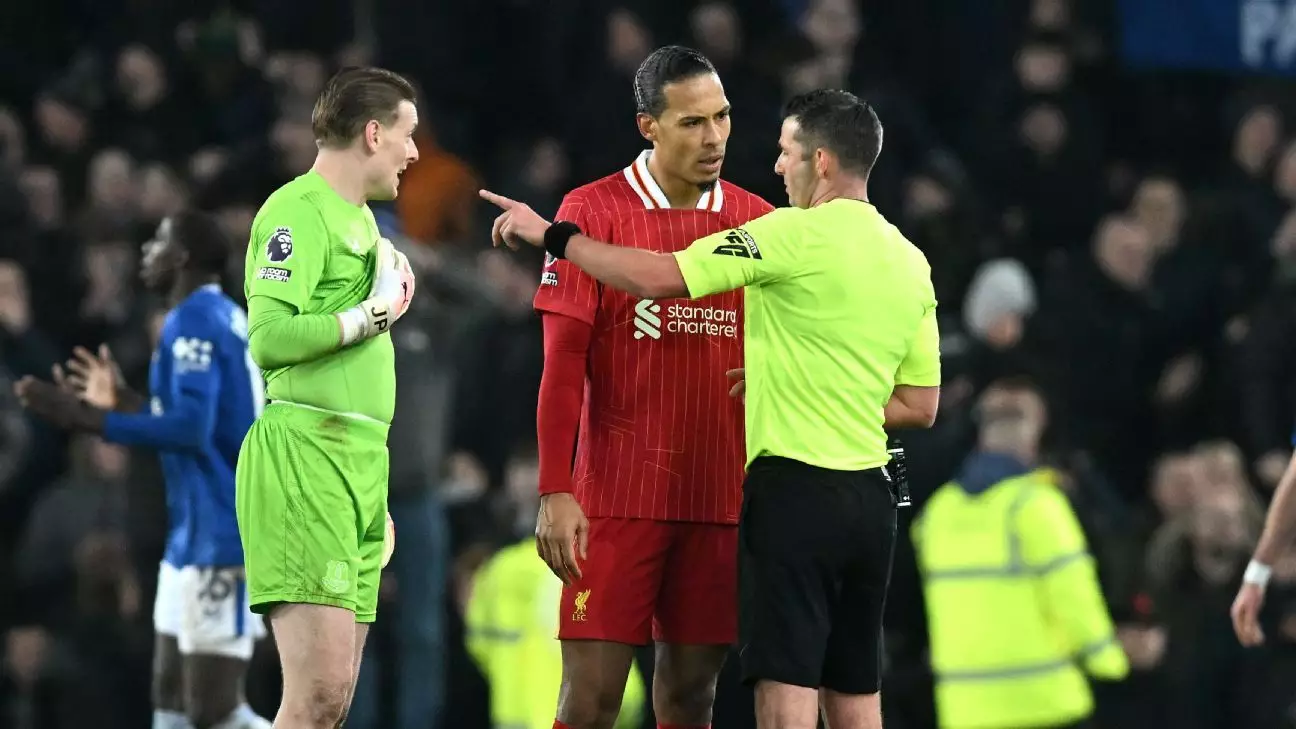The recent Merseyside derby between Liverpool and Everton at Goodison Park was anything but ordinary. What began as an intense clash on the pitch quickly transformed into a spectacle of chaos, culminating in a dramatic 2-2 draw that left fans and players alike buzzing with emotions. This historic match not only showcased the fierce rivalry between the clubs but also highlighted significant officiating concerns and the thin line between competitive spirit and disorderly conduct.
Following the game, Liverpool’s captain, Virgil van Dijk, offered a scathing critique of referee Michael Oliver’s performance. Van Dijk argued that Oliver “lost control” of the match during critical moments, culminating in a series of contentious decisions. The final whistle ushered in not just jubilation from Everton fans after an extraordinary late equalizer by James Tarkowski, but also an unexpected confrontation that spiraled into chaos. The melee escalated when tensions flared between players and the crowd, leading to a brawl that necessitated intervention from stewards and police. Such scenes are not what one typically expects at a professional football match, raising questions about the officiating and immediate aftermath of high-stakes games.
The emotional volatility of the encounter reached a breaking point after Tarkowski’s stunning volley. Abdoulaye Doucouré’s provocative interactions with the opposing fanbase sparked confrontations that involved several players, highlighting the sometimes fraught atmosphere surrounding local derbies. The aftermath witnessed three red cards issued, including those for Liverpool’s Curtis Jones and manager Arne Slot, which further underscored the tensions on display. The question many are left pondering is how a situation escalates to the point of involving coaches and thereby infringing on their roles during such crucial moments.
In his post-match remarks, Everton manager David Moyes acknowledged the emotional charge of the night, framing it as a fitting final Merseyside derby at the historic venue. Moyes described the match as a “wee bit of a throwback” to times when physicality often defined such encounters. He did not, however, delve into the chaotic scenes post-match, perhaps to maintain focus on the overall display of both teams. His comments suggest a successful strategy in turning the match into a scrappy contest to limit Liverpool’s effectiveness, showcasing Everton’s ambition to level the playing field in the rivalry.
As both teams reflect on this tempestuous derby, Liverpool’s players and fans must reckon with the fallout from an increasingly contentious rivalry. With heightened emotions often spilling onto the pitch, the crucial role of refereeing becomes ever more significant. For both clubs, the focus will need to shift quickly to future fixtures, as they navigate not only the competitive challenges ahead but also the lingering implications of a derby that will likely be remembered for its intensity, emotion, and officiating controversies. The Merseyside derby remains a testament to football’s unpredictable nature, where one moment of brilliance can both elevate and undermine the spirit of the sport.


Leave a Reply